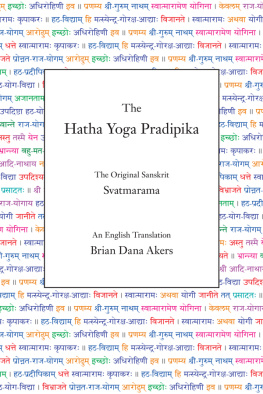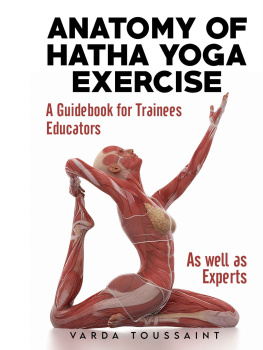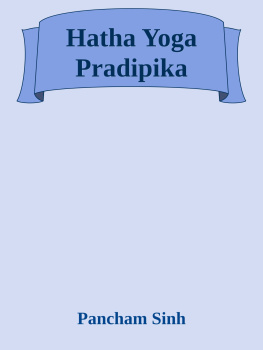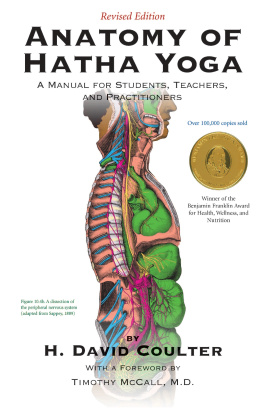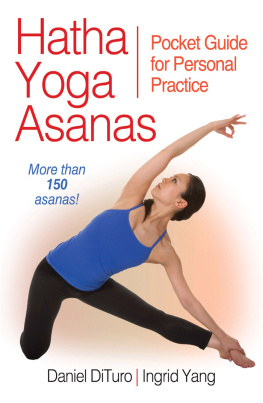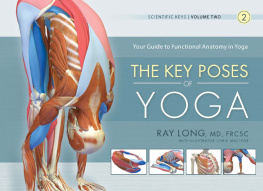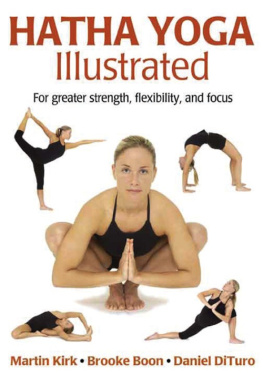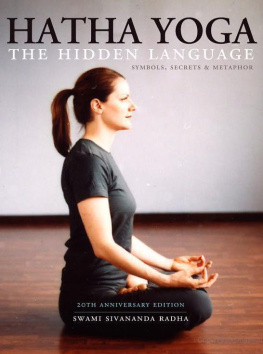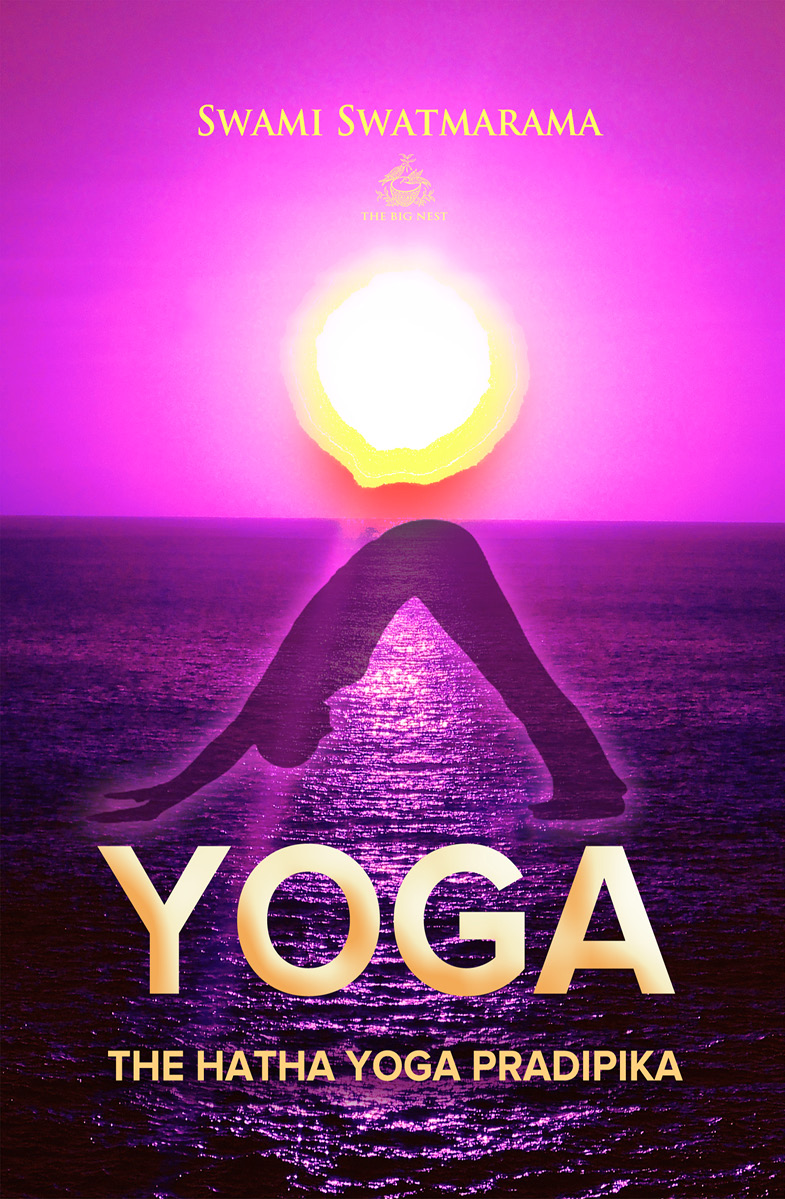
Swami Swatmarama
YOGA
The Hatha Yoga Pradipika

THE BIG NEST
LONDON NEW YORK TORONTO SAO PAULO MOSCOW
PARIS MADRID BERLIN ROME MEXICO CITY MUMBAI SEOUL DOHA
TOKYO SYDNEY CAPE TOWN AUCKLAND BEIJING
Yoga Academy
New Edition
Published by The Big Nest
An imprint of Max Bollinger
27 Old Gloucester St,
London WC1N 3AX
sales@thebignest.co.uk
www.thebignest.co.uk
This Edition
First published in 2013
Author: Swami Swatmarama
Editor: Max Bollinger
Copyright 2013 The Big Nest
Cover design and artwork 2013 Urban-Pic.co.uk
All Rights Reserved. Without limiting the rights under copyright reserved above no part of this publication may be reproduced, stored in or introduced into a retrieval system or transmitted, in any form or by any means (electronic, mechanical, photocopying, recording or otherwise), without the prior written permission of both the copyright owner and the above publisher of this book.
The greatest care has been taken in compiling this book. However, no responsibility can be accepted by the publishers or compilers for the accuracy of the information presented.
British Library Cataloguing in Publication Data.
A catalogue record for this book is available from the British Library.
Library of Congress Cataloguing in Publication Data.
A catalogue record for this book has been requested.
ISBN: 9781909676794 (pbk)
ISBN: 9781909676800 (ebk)
Bref: HYP-03
Contents
Introduction
The Hatha Yoga Pradipika is a classical text describing Hatha Yoga. It is said to be the oldest surviving text on Hatha Yoga. Swami Swatmarama, a disciple of Swami Goraknath, wrote the text in the 15th century CE, drawing upon previous texts and his own experiences. While the text describes asanas (postures), purifying practices (shatkarma), mudras (finger and hand positions), bandhas (locks), and pranayama (breath exercises), it also explains that the purpose of Hatha Yoga is the awakening of kundalini (subtle energy), advancement to Raja Yoga, and the experience of deep meditative absorption known as samadhi.
Chapter 1: Asana
1. Salutation to adinatha (Siva) who expounded the knowledge of Hatha Yoga, which like a staircase leads the aspirant to the high pinnacled Raja Yoga.
2. Yogin Swatmarama, after saluting his Guru Srinatha explains Hatha Yoga for the attainment of Raja Yoga.
REASON RAJA YOGA IS NOT KNOWN
3. Owing to the darkness arising from the multiplicity of opinions people are unable to know the Raja Yoga. Compassionate Swatmarama composes the Hatha Yoga Pradipika like a torch to dispel it.
TEACHERS AND MASTERS OF THE PAST
4. Matsyendra, Goraksa, etc., knew Hatha Vidya, and by their favor Yogi Swatmarama also learnt it from them.
5. The following Siddhas (masters) are said to have existed in former times:
Sri Adinatha (Siva), Matsyendra, Natha, Sabar, Anand, Bhairava, Chaurangi, Mina Natha, Goraksanatha, Virupaksa, Bilesaya.
6. Manthana, Bhairava, Siddhi Buddha, Kanthadi, Karantaka, Surananda, Siddhipada, Charapati.
7. Kaneri, Pujyapada, Nityanatha, Niranjana, Kapali, Vindunatha, Kaka Chandiswara.
8. Allama, Prabhudeva, Ghoda, Choli, Tintini, Bhanuki, Nardeva, Khanda Kapalika, etc.
9. These Mahasiddhas (great masters), breaking the sceptre of death, are roaming in the universe.
10. Like a house protecting one from the heat of the sun, Hatha Yoga protects its practisers from the burning heat of the three Tapas; and, similarly, it is the supporting tortoise, as it were, for those who are constantly devoted to the practice of Yoga.
HOW TO PRACTICE YOGA
11. A yogi desirous of success should keep the knowledge of Hatha Yoga secret; for it becomes potent by concealing, and impotent by exposing.
12. The Yogi should practice Hatha Yoga in a small room, situated in a solitary place, being 4 cubits square, and free from stones, fire, water, disturbances of all kinds, and in a country where justice is properly administered, where good people live, and food can be obtained easily and plentifully.
13. The room should have a small door, be free from holes, hollows, neither too high nor too low, well plastered with cow-dung and free from dirt, filth and insects. On its outside there should be bowers, raised platform (chabootra), a well, and a compound. These characteristics of a room for Hatha Yogis have been described by adepts in the practice of Hatha.
14. Having seated in such a room and free from all anxieties, he should practice Yoga, as instructed by his guru.
FAILURE IN YOGA
15. Yoga is destroyed by the following six causes: Over-eating, exertion, talkativeness, adhering to rules, i.e., cold bath in the morning, eating at night, or eating fruits only, company of men, and unsteadiness.
SUCCESS IN YOGA
16. The following six bring speedy success: Courage, daring, perseverance, discriminative knowledge, faith, aloofness from company.
YAMAS AND NIYAMAS
17. The ten rules of conduct are: ahimsa (non-injuring), truth, non-stealing, continence, forgiveness, endurance, compassion, meekness, sparing diet, and cleanliness.
18. The ten niyamas mentioned by those proficient in the knowledge of Yoga are: Tapa, patience, belief in God, charity, adoration of God, hearing discourses on the principles of religion, shame, intellect, Tapa and Yajna.
ASANAS: THE FIRST ACCESSORY
OF HATHA YOGA
19. Being the first accessory of Hatha Yoga, asana is described first. It should be practiced for gaining steady posture, health and lightness of body.
20. I am going to describe certain asanas which have been adopted by Munis like Vasistha, etc., and Yogis like Matsyendra, etc.
21. Having kept both the hands under both the thighs, with the body straight, when one sits calmly in this posture, it is called Swastika.
22. Placing the right ankle on the left side and the left ankle on the right side, makes Gomukha-asana, having the appearance of a cow.
23. One foot is to be placed on the thigh of the opposite side; and so also the other foot on the opposite thigh. This is called Virasana.
24. Placing the right ankle on the left side of the anus, and the left ankle on the right side of it, makes what the Yogis call Kurma-asana.
25. Taking the posture of Padma-asana and carrying the hands under the thighs, when the Yogi raises himself above the ground, with his palms resting on the ground, it becomes Kukkuta-asana.
26. Having assumed the Kukkuta-asana, when one grasps his neck by crossing his hands behind his head, and lies in this posture with his back touching the ground, it becomes Uttana Kurma-asana, from its appearance like that of a tortoise.
27. Having caught the toes of the foot with both hands and carried them to the ears by drawing the body like a bow, it becomes Dhanura asana.
28-29. Having placed with the right foot at the root of the left thigh, let the toe be grasped with the right hand passing over the back, and having placed the left foot on the right thigh at its root, let it be grasped with the left hand passing behind the back. This is the asana, as explained by Sri Matsyanatha. It increases appetite and is an instrument for destroying the group of the most deadly diseases. Its practice awakens the Kundalini, stops the nectar shedding from the moon in people.
30. Having stretched the feet on the ground, like a stick, and having grasped the toes of both feet with both hands, when one sits with his forehead resting on the thighs, it is called Paschima Tana.


